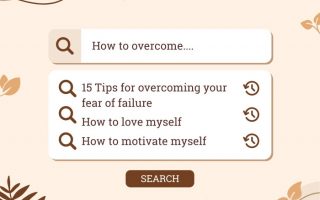Establish a digital presence without breaking the bank. Or perhaps a hobbyist wanting to share your passion with the vast online community? If the answer to any of these questions is yes, then you’ve come to the right place.
Here’s a fact that might surprise you, Roughly 60% of small businesses are still not online. This guide aims to empower you with the knowledge and tools to create your website for free.
“Creating a website doesn’t need to be a costly or technically daunting endeavor. With the right guidance and resources, anyone can design a functional and visually appealing website.“
The process of website creation can be broken down into a series of manageable steps. While it might seem intimidating at first glance, systematically tackling each step can help demystify the process.
- Identify the purpose of your website
- Select a suitable website-building platform
- Choose a unique and relevant domain name
- Design your website layout and pages
- Add essential functionalities
- Test and publish your website
Each of these steps will be discussed in detail in the following sections. This guide will not only explain the what and how of each step, but also why it’s important, thus giving you a holistic understanding of the process.
Alongside this step-by-step guide, we will also recommend free tools and platforms that you can leverage to create your website. We understand that every user has unique needs and preferences, hence the options presented will cater to a variety of requirements.
But what if you encounter challenges during the process? Worry not. This guide also addresses common roadblocks that beginners may face and provides practical solutions to overcome them. From selecting the perfect theme to optimizing your website for search engines, we’ve got you covered.
Table of Contents
1. Choose Your Website Platform
The first step in your journey to creating a website for free is selecting the right platform. This step is crucial, as the platform forms the foundation of your website. It is the soil in which your website will grow and flourish. But how do you choose the right platform?
There are countless platforms available, each with its strengths and weaknesses. Some of these platforms include WordPress, Wix, Weebly, and Squarespace. The key to choosing the right platform lies in understanding your own needs and capabilities.
Consider Your Skill Level
If you’re a beginner with no coding experience, website builders like Wix or Weebly can be a great choice. These platforms offer a user-friendly interface and a drag-and-drop design feature that allows you to create a website without writing a single line of code.
Consider Your Website’s Purpose
What purpose will your website serve? Are you creating a blog, an online store, a portfolio, or a corporate website? Different platforms cater to different needs. For example, WordPress is excellent for blogs, Also WordPress powers around 39.5% of all websites on the internet. while platforms like Shopify are better suited for online stores.
Consider Your Budget
Though the aim is to create your website for free, it’s worth noting that some platforms offer more features and flexibility at a cost. However, many platforms provide a basic package that is completely free. We recommend starting with a free package and deciding if you need to upgrade later.
Do Your Research
Before making a decision, spend some time researching different platforms. Read reviews, check out examples of websites built with each platform, and take advantage of free trials. This will give you a better sense of what each platform can offer and how they can meet your needs.
2. Select a Domain Name
“The best way to predict the future is to create it.” – Peter Drucker
This quote beautifully captures the essence of what we’re trying to achieve here. So, let’s start creating your future by building your website!
Choosing a domain name is the next important step in building your website. Your domain name is your website’s address on the internet, so it should be memorable, easy to spell, and reflect what your website is about. Most website builders offer domain name registration services, and some even offer it for free.
However, keep in mind that free domains usually include the name of the website builder in the URL, such as “yourbusiness.com”. If you want a custom domain name without any additional tags, there might be a small fee involved.
But don’t let that discourage you – some platforms offer a custom domain name for free, like Freenom. Take your time to choose a domain name that truly represents your website and makes it easy for your audience to find you online.
If you’re still undecided, try out domain name generators like Business Name Generator or Godaddy. These tools can suggest available domain names based on your keywords, making the selection process easier. Once you’ve chosen your domain name, it’s time to move on to the exciting part – designing your website!
3. Choose The Website Hosting
Now that you’ve selected an appropriate domain name, the next step in creating your website for free is choosing a website hosting platform.
You need to choose where your site will live on the internet. This is referred to as “hosting” and it essentially means that all of the files associated with your website will be stored somewhere so they can be accessed by visitors.
There are many hosting providers out there offering different levels of service at various price points. For this article, however, we’ll focus on free options.
Free Hosting Options: There are several free hosting options available, such as WordPress, Wix, Weebly, and Google Sites. These platforms offer free hosting services, though they may include some limitations, like limited bandwidth or storage, and may present ads on your site.
- Hostinger: Hostinger’s free hosting is great for people who want a good website but don’t want to spend a lot of money. They give you lots of free designs to make your website look unique. If you’re new to making websites and want to save money, Hostinger is a great choice.
- Wix: Known for its user-friendly drag-and-drop feature, Wix offers free hosting with a variety of design options.
- Weebly: Weebly provides a free hosting service with a simple-to-use interface, suitable for beginners.
- Mumuhost: MumuHost stands out in the crowded web hosting market with its exceptional speed, reliable uptime, and customer-centric support. It’s an unsung hero that offers top-tier features without breaking the bank. If you’re looking for a hosting solution that combines affordability with performance, MumuHost is worth your consideration.
- 000webhost: 000webhost offers free web hosting that’s perfect for beginners. You get a lot of cool features without paying anything. It’s easy to use, and you can even try out different website designs. If you’re new to websites and want a free way to start, 000webhost is a good option.
It’s important to note that while these platforms provide free hosting services, they also offer paid plans with enhanced features. Make sure to consider your website’s needs and growth potential before making a decision. It’s always possible to start with a free plan and upgrade as your needs evolve.
Remember, your choice of hosting platform should align with your website’s purpose, your skill level, and your budget. Once you have chosen a hosting provider, it’s time to create your actual website. To do this, log into the control panel provided by your host and look for the “website builder” or similar option (it may be labeled differently depending on which service you are using). From here, simply follow the instructions provided to build out your site.
See also: The Science of Viral Content: What Makes a Post Go Viral?
4. Design Your Website
A website is an important step to establishing your online presence. Whether you’re launching a personal blog, setting up an online business storefront, or showcasing your portfolio, a website is your digital calling card. The good news is, you don’t need to spend a fortune to make a professional-looking website. You can do it for free! In this article, we will guide you on how to create your website without spending a dime.
Before we dive in, let’s set some expectations. While making a website for free is entirely possible, know that it may require a bit more effort on your part. You’ll need to navigate through a few technical aspects and make some decisions along the way. But don’t worry, we’re here to help you through every step of the process.
“In essence, website creation is all about making the right choices that suit your needs and capabilities. What’s essential is that you’re taking the first step into the digital world, and doing so on a budget.”
So, are you ready to embark on your website creation journey? Let’s get started! Here are the main steps you’ll need to follow:
Understand Your Website’s Structure
Before diving into the design process, take some time to understand the basic structure of a website. Every website has key elements such as a header, navigation menu, main content area, sidebar, and footer. Having this fundamental understanding will help you organize your content and design a user-friendly website.
Select a Website Template
Most website builders offer pre-designed templates that you can use as a starting point. These templates are customizable, so you can adjust colors, fonts, and layouts to match your brand’s look and feel. When selecting a template, prioritize functionality over aesthetics. The template should fit your website’s purpose and be easy for visitors to navigate.
Customize Your Website
Once you’ve selected a template, it’s time to make it your own. Customize your website by adding your text, images, and logo. Ensure your website’s design is consistent across all pages to create a cohesive user experience. Additionally, remember to keep your design simple and clean to maintain readability and usability.
Add Essential Pages
Every website needs a few essential pages, regardless of its purpose. These typically include a homepage, about page, contact page, and services or product page. Depending on your website’s purpose, you may also need additional pages such as a blog, portfolio, or online store. Make sure to include all the necessary information your visitors might need.
Optimize for Mobile
More than half of all web traffic comes from mobile devices, so it’s crucial to ensure your website looks good and functions well on both desktop and mobile. Most website builders offer responsive templates, which automatically adjust to different screen sizes. However, it’s still important to test your website on multiple devices to ensure a seamless user experience.
See also: Top 7 Ways Machine Learning Takes Digital Marketing To The Next Level
5. Design Your Website
Your website’s design is pivotal to your online presence. It should be visually appealing, easy to navigate, and reflective of your brand’s identity. Here’s how to go about it:
- Choose a Template: Start by selecting a template that fits your brand’s aesthetic and your website’s purpose. Most website builders offer a wide range of free templates for you to choose from.
- Customize the Layout: Once you’ve chosen a template, customize it to make it your own. You can change the colors, fonts, and layout to suit your preferences and brand style.
- Add Essential Pages: Your website should at least have an ‘About Us’ page, a ‘Contact Us’ page, and a home page. Depending on your website’s purpose, you may also need to add product or service pages, a blog page, or a portfolio page.
- Use High-Quality Images: Good-quality images can make your website look professional and visually appealing. There are several websites where you can download free high-quality images.
Remember, your website’s design should not only be attractive but also user-friendly. A well-designed website can help attract and retain visitors, turning them into customers or followers.
6. Add Essential Functionalities
After you’ve laid the groundwork for your website, it’s time to add some key functionalities that will enhance your site’s usability and serve your website’s purpose. Think of these functionalities as the features that will make your website more than just a static page on the internet, but rather, an engaging platform for your visitors.
Navigation Menus
Make sure your site is easy to navigate by adding straightforward and intuitive menus. This could be a top navigation bar, a sidebar, or both. Your visitors should be able to find the information they’re looking for with just a few clicks.
Contact Form
A contact form is essential for any website, as it provides a way for your visitors to reach out to you. Most website builders have easy-to-use contact form features.
Social Media Buttons
If you’re active on social media, make sure to include links to your profiles. These can be placed in the footer or header of your website, or even in a dedicated ‘Contact Us’ section.
Blog Section
If your website is for a business, consider adding a blog section. This can help you engage with your audience, showcase your expertise, and improve your site’s SEO ranking.
E-commerce Functionalities
If you’re planning to sell products or services directly from your site, you’ll need to add e-commerce functionalities. This includes product pages, shopping carts, and secure payment gateways. Remember, many website platforms offer free e-commerce features, so you won’t necessarily need to invest in a paid solution.
Keep in mind, that the specific functionalities you add will depend on the purpose of your website. Start with these basics, then consider what other features may serve your audience best.
See also: SEO vs SEM: Which is Right for Your Business?
7. Test Your Website
Before you publish your website, it’s important to thoroughly test it. This includes checking each page to ensure all links, buttons, and forms work correctly. Here’s a simple checklist to guide you:
- Functionality: Make sure every page loads correctly, and all the links, buttons, and forms are functioning as they should.
- Usability: Your website should be easy to navigate. Check if the menu is intuitive and the important information is easy to find.
- Responsiveness: Test your website on different devices to ensure it’s fully responsive and provides a good user experience across all platforms.
- Speed: Slow websites can frustrate users and harm your search engine rankings. Use online tools to test your website’s speed and identify any areas that need improvement.
Once your website passes these tests, you’re ready to publish it and start attracting visitors!
8. Publish and Promote Your Website
After you’ve tested and tweaked your website, it’s time to publish it. But publishing your website is just the first step. If you want to attract visitors, you’ll need to actively promote your website. Here are some ways to do that:
Optimize for Search Engines
Search Engine Optimization (SEO) is a crucial factor in drawing organic traffic to your website. Incorporate relevant keywords into your content, use meta tags, and create quality backlinks to improve your site’s ranking on search engines.
Utilize Social Media
Social media platforms are a powerful tool for website promotion. Create profiles on popular platforms such as Facebook, Instagram, and Twitter. Share links to your website, interact with your followers and use these channels to build a community around your brand.
Start a Blog
Starting a blog on your website can help you provide value to your visitors, keep them engaged, and encourage them to return. It’s also an excellent way to improve your SEO as search engines favor websites with fresh and relevant content.
Collaborate with Influencers
Reach out to influencers in your industry for collaborations. They can help you reach a larger audience and boost your website’s credibility. Although some may charge for their services, others may agree to a collaboration in exchange for complimentary products or services.
Offer Valuable Content
High-quality, relevant content is the best way to attract and retain visitors. Regularly update your website with useful information, insightful articles, or interesting visuals that cater to your audience’s needs and interests.
See also: What Is Parasite SEO? How to Leverage It for Success
Are there any hidden costs or fees associated with creating a website for free?
Creating a website for free can initially seem like a cost-effective endeavor, but it’s important to consider potential hidden costs that might crop up in the process. While most of the tools and platforms can be utilized at no cost, some features may require payment.
Premium Features
Sometimes, certain design features, additional storage, or advanced functionalities are only available through premium options. While the basic versions are free, you may find yourself needing to upgrade to access these advanced features.
Domain Name
While many website-building platforms offer free subdomains, having a personalized domain name usually requires an additional fee. A personalized domain name can give your website a more professional look and is easier for visitors to remember.
Website Hosting
Free website builders often include hosting, but this comes with limitations such as bandwidth restrictions. To accommodate heavy traffic, faster loading speeds, or better security, you might need to upgrade to a paid hosting plan.
Advertising
Free website platforms often compensate for offering free services by displaying their ads on your website. If you want an ad-free website, you may need to invest in a paid plan.
Remember, building a website is not a one-time task. It requires regular updates and optimizations to keep it relevant and effective. But don’t worry, with the right tools and knowledge, you can easily manage and grow your website over time. Happy website building!



